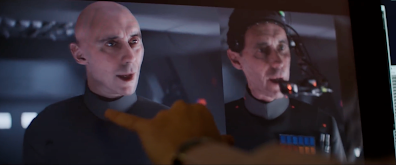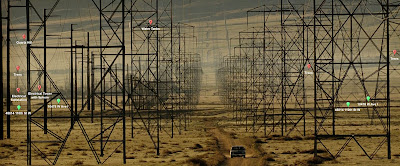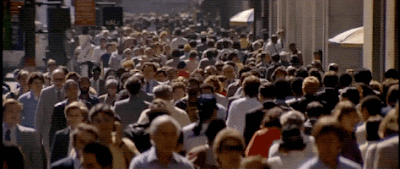Back in 2020, Hal Hickel answered a Quora question with great detail about how we created Grand Moff Tarkin for "Rogue One" (2016), and in the interest of film history preservation, I got Hal's permission to reprint it here. (I was a lead on the digital human team at ILM for Tarkin, and worked closely with Hal on the film.)
Hal summarizes our process succinctly, and corrects many misconceptions and untruths about how we made Tarkin, so I feel like this is an important document. To be frank, I hesitate to talk publicly too much about our Tarkin and Leia work for "Rogue One" because for some folks it generates a lot of... emotion.
I, like Hal, have no interest in defending the quality of our work. I'll say this: immediately after the movie came out, I talked to a lot of regular, non-industry people who saw the movie and asked them their thoughts on Tarkin, 'you know, the older gentleman who was Krennic's boss.' Many folks didn't understand the nature of my question, nor why I was asking it. They liked his performance, and didn't think anything further of it. Then I let them know that Tarkin is a digital creation, meant to resemble Peter Cushing who appeared in the original "Star Wars" (1977) and who died in 1994. I got a lot of stunned reactions from relaying that news. A lot of people who saw "Rogue One" had no idea that Tarkin was a digital, synthetic character, and just assumed it was a regular human actor.
I hope you like Hal's piece.
. . . .
Quora: Why does Tarkin's CGI in Rogue One look so plastic-y? Could they have made it look more realistic?
Answered by Hal Hickel, Animation Supervisor for "Rogue One"
Hi, I was the animation supervisor on Rogue One, and as such I was intimately involved with the creation of Tarkin.
I’ve decided to chime in for one purpose only, to clarify the process we used. I have no interest in trying to convince anyone to like the results more than they do, or to argue with anyone about how “real” our work looked in the film. Again, I just want to clarify our process for informational purposes.
The broad plan was to hire an actor, film them on set in costume, and just replace the head with a CG Tarkin head, leaving the real body in the scene. The actor on set would be wearing a helmet with small cameras mounted to it, to record their facial performance (similar to what you’ve seen in the behind the scenes footage from Avatar, or Planet of the Apes).
That’s what we did, excepting that in about 30% of the shots, we opted for full replacement (head and body) with CG, because for certain shots it just made more sense.
Guy Henry was cast because he’s a terrific actor, and had the bearing and vocal quality we were looking for. It was helpful that he also had a certain physical resemblance (high cheekbones, etc), though that was not essential, given that the plan was to completely replace his head with our CG Tarkin. That said, when remapping the facial expressions of one person onto another (Henry to Cushing), the more similar they are, the easier it’s going to be.
The intention was never for Guy to do either a vocal, or physical “impression” of Peter Cushing, but rather to give us a performance that “felt” like Tarkin, both physically and vocally. So we never asked for, or expected a spot on vocal match, or for Guy to smirk, etc, like Cushing.
We didn’t do any modulation or any other audio tricks with Henry’s voice. We didn’t compare waveforms with Cushing audio, talk to his old manager, or any of that other stuff mentioned elsewhere in this thread. We just used Guy Henry’s voice. I’m sure Guy watched the Tarkin scenes from ANH endlessly, and did his best to find a tone and delivery that felt right.
Guy didn’t wear any prosthetics or makeup as part of the process, with the exception of the dots that help us track his facial movement. Someone in this thread talked about “makeup, cosmetics, physical altering”. No. Again, we just put dots on Guy’s face to track it’s movement, that’s all.
Guy was filmed on set, in the costume. The movement of the dots on his face, and his voice were recorded simultaneously during filming. I mention this, because some VFX companies prefer a method where Facial Capture is done separately, on a specialized stage at a later time. We prefer to capture an actor’s performance all at once (voice, body, face) whenever possible.
We also scanned Guy Henry on the ICT Light Stage, to give us a high resolution CG model of Guy Henry, and to capture his skin texture. Now why would we need a CG Guy Henry?

The CG version of Guy Henry (left) and the real Guy Henry as photographed (right), from Rogue One - A Star Wars Story: The Princess & The Governor Featurette
We needed it for a few reasons: One is that once we’ve tracked the motion of the dots on his face in a given piece of performance, rather than immediately applying that motion data to the CG Tarkin, we instead apply it first to the CG Guy Henry. This give us an apples to apples comparison to see if we’ve captured and processed the facial performance accurately. When we’re satisfied that we have, we then apply it to Tarkin.
Another reason, is that having the lighting data that is captured with Guy Henry on the Light Stage, gives us a sort of “ground truth” that we can compare our CG Tarkin to, to see if his skin is reacting to light realistically. Also, because there are many things about the fine details of Guy Henry’s skin that are appropriate for Tarkin’s skin (general tone, pores, etc), we can use the Guy Henry textures as a way to get a leg up on the Tarkin skin textures, rather than starting from zero.
Ok, so we’ve hired an actor, and shot them on location. We’ve built a CG copy of that actor in order to be able to check out facial capture data to see that it’s accurate, and to give us a “ground truth” for the skin texture and lighting.
Now we (obviously) have to build a CG Tarkin.
I noticed some comments in another answer in this thread about his mouth “not being aligned to his chin”, or the ears being “too long”. Again, I’m not here to argue the merits of our work, but I think it’s useful to point out that if you assembled hundreds of photographs of Peter Cushing (as we did), you would find that he can look vastly different from one photograph to another, depending on his expression, the lighting, the makeup, the focal length of the lens, the year the photo was taken, etc etc. So comparing a single frame of our Tarkin to a single photo of Cushing is not a particularly valid way to troubleshoot whatever issues there may be.
Luckily, we didn’t have to work from just photos. We had in our possession a life casting of Peter Cushing’s face. It was made not long after New Hope, so it was very accurate in terms of Cushing’s age, etc. Of course we know that sometimes the process of taking a life cast can slightly distort the face of the subject (the weight of the casting material can pull down on the skin), so we were mindful of that. That casting was a terrific starting point for us, and gave us very accurate information.
Starting from there, a very accurate CG model of Tarkin was created. As well, highly detailed textures, with pore detail, age spots, veins, etc etc. The CG hair groom was challenging, as the styling on Cushing for that role was a bit eccentric.
So taking one shot from the film as an example, let’s say a medium close up:
We track the movement of Guy’s head through space, so we can move the CG Tarkin head in the same way.
We track the dot motion on Guy’s face to extract his facial performance. We apply that motion to the CG Guy Henry, and if we’re happy with how it looks, we apply it to the CG Tarkin. By the way, someone in this thread theorized that perhaps the CG Tarkin was missing “micro expressions”. While we are always trying to increase the accuracy, and detail of our Facial Capture system, I have to say that even now, we are capturing very fine detail, including very tiny, barely perceptible micro movements. We are familiar with Paul Ekman’s work, and the importance of Micro Expressions, and have tried hard to be sure that level of fidelity exists in our work. If it was happening on Guy Henry’s face, it was happening on Tarkin’s face.
Now we have the real Guy Henry body, with the CG Tarkin head. We paint out any bits of Henry’s head that Tarkin doesn’t cover up.
We make adjustments to the facial performance to make it feel more “Tarkin”, since (unsurprisingly), Guy Henry doesn’t use his facial muscles the same way that Peter Cushing did. Guy doesn’t smile like Cushing, doesn’t form phonemes like Cushing, etc. So we have to do a sort of “motion likeness” pass. This is done by our animators, using a very light touch. Note: the point is NOT to change the acting choices made by Guy Henry, it’s just to adjust things so that when Guy chooses to smile, it looks like a Tarkin smile, not like a Guy Henry smile. Of course in doing so, we have to be very careful to maintain exactly what sort of smile it is. We don’t want to transform a mocking, insincere smile into a genuine, warm smile.
The Tarkin head with final facial performance is lit to match the lighting in the footage, and rendered.
The rendered CG Tarkin head is composited onto the real Guy Henry body.
There are of course many many steps to each one of the steps I’ve outlined above. Each one of these steps encompasses the highly skilled work of many many very talented artists and technicians.
So again, like it, don’t like it, that’s none of my business. I just wanted to get the facts out there, in terms of our process, because there was some inaccurate information being posted.
Thanks for reading.
H











.2024-10-15%2010_47_16.gif)


.2024-10-15%2012_37_51.gif)

































